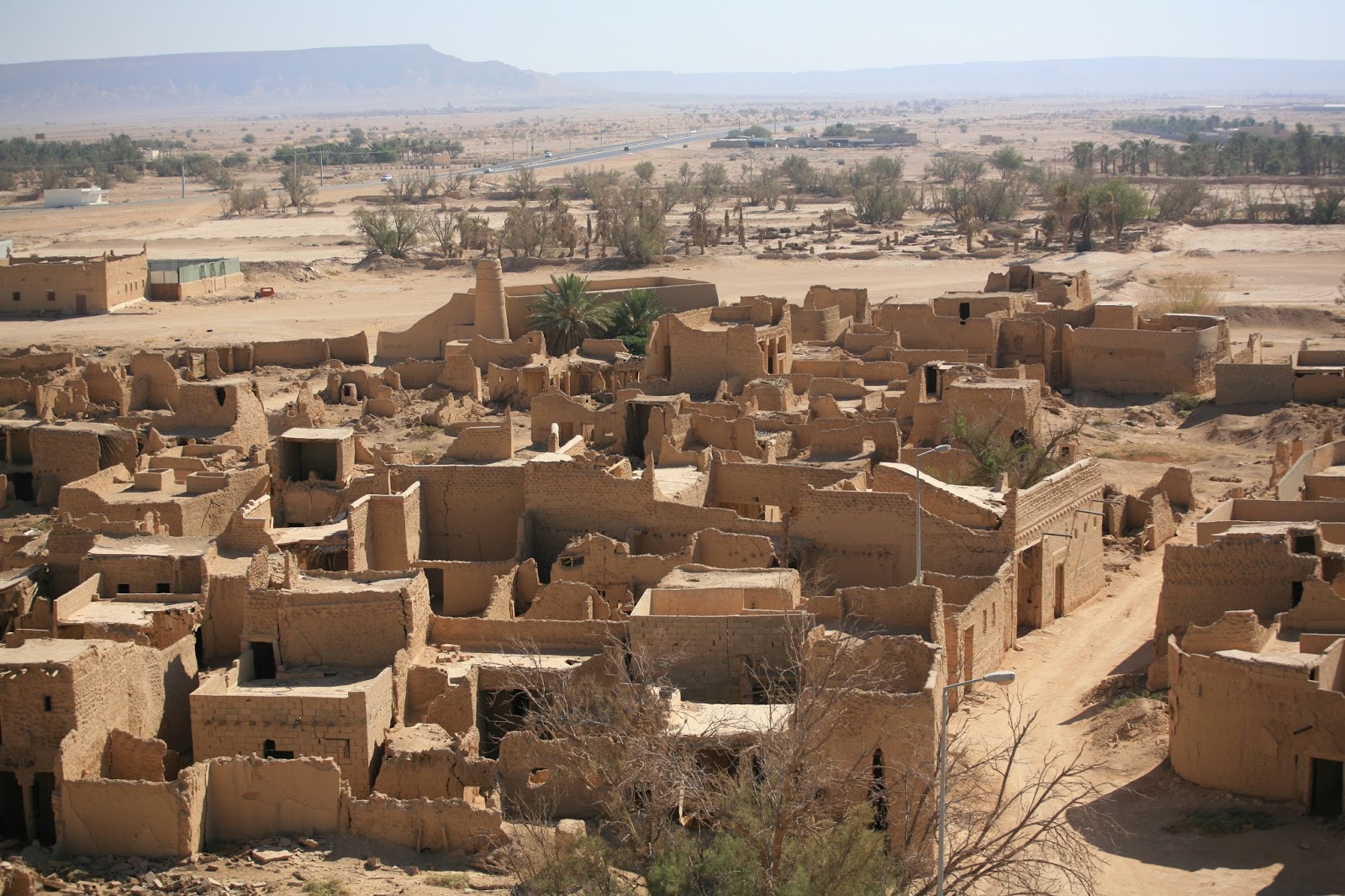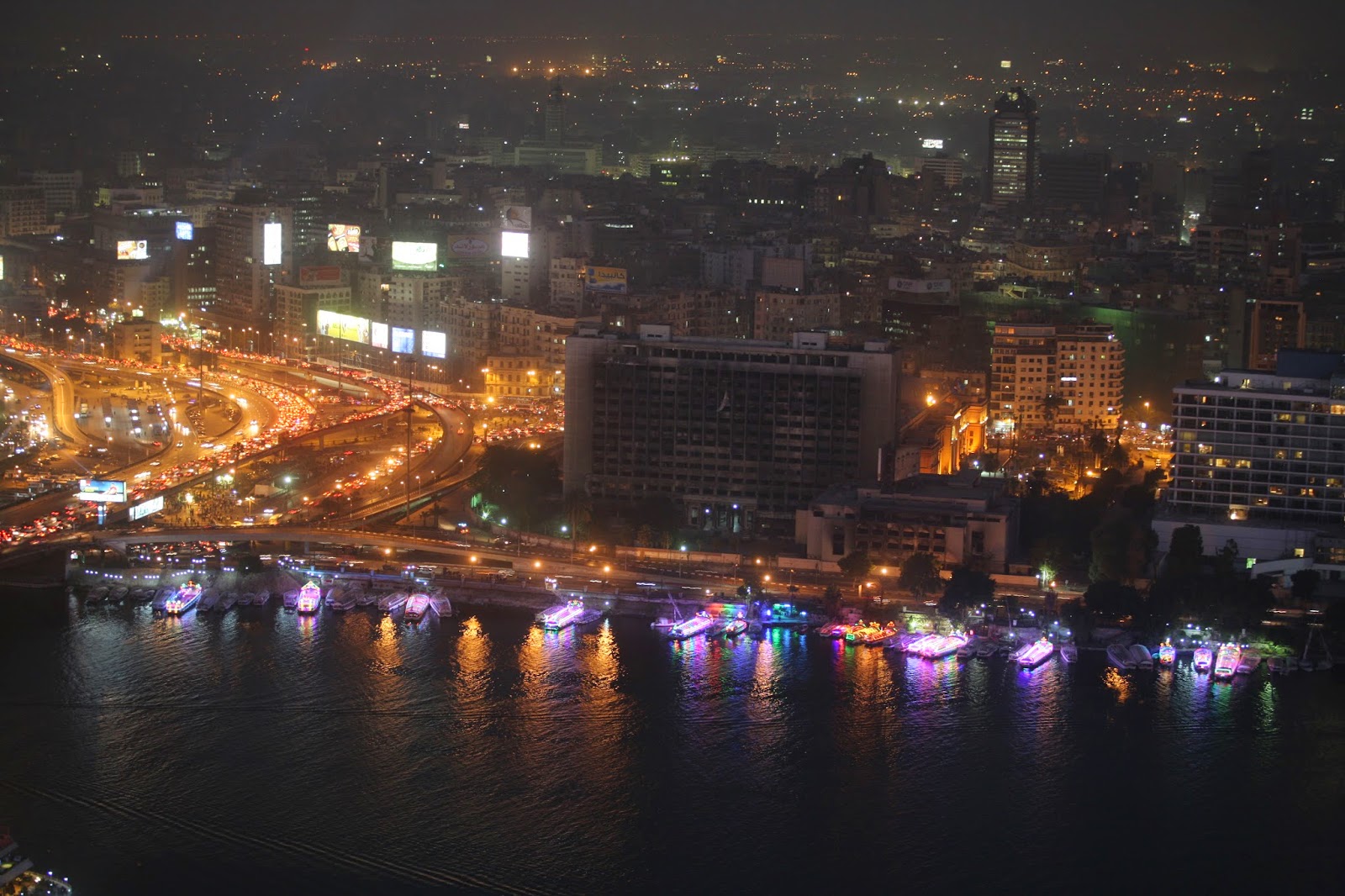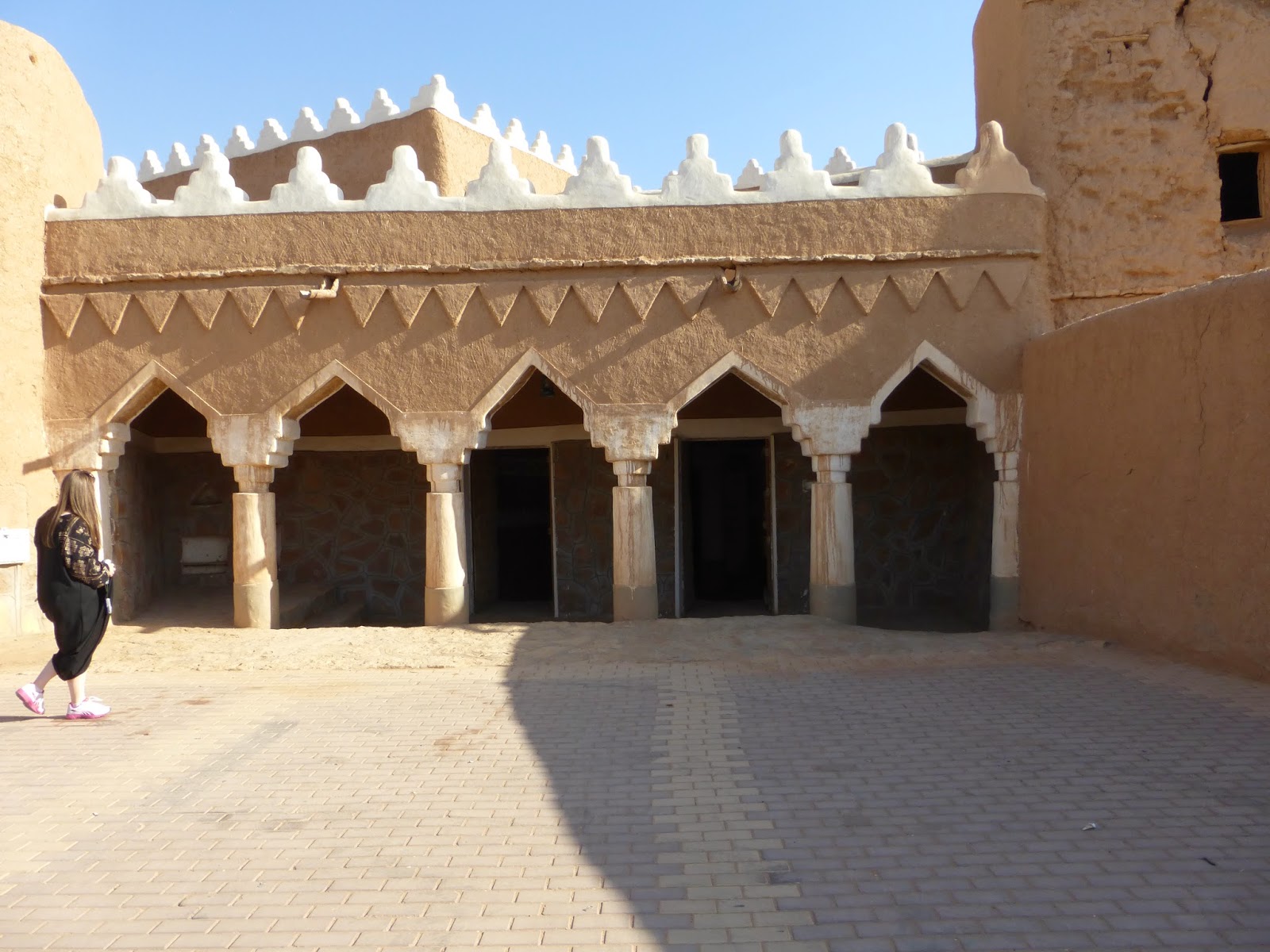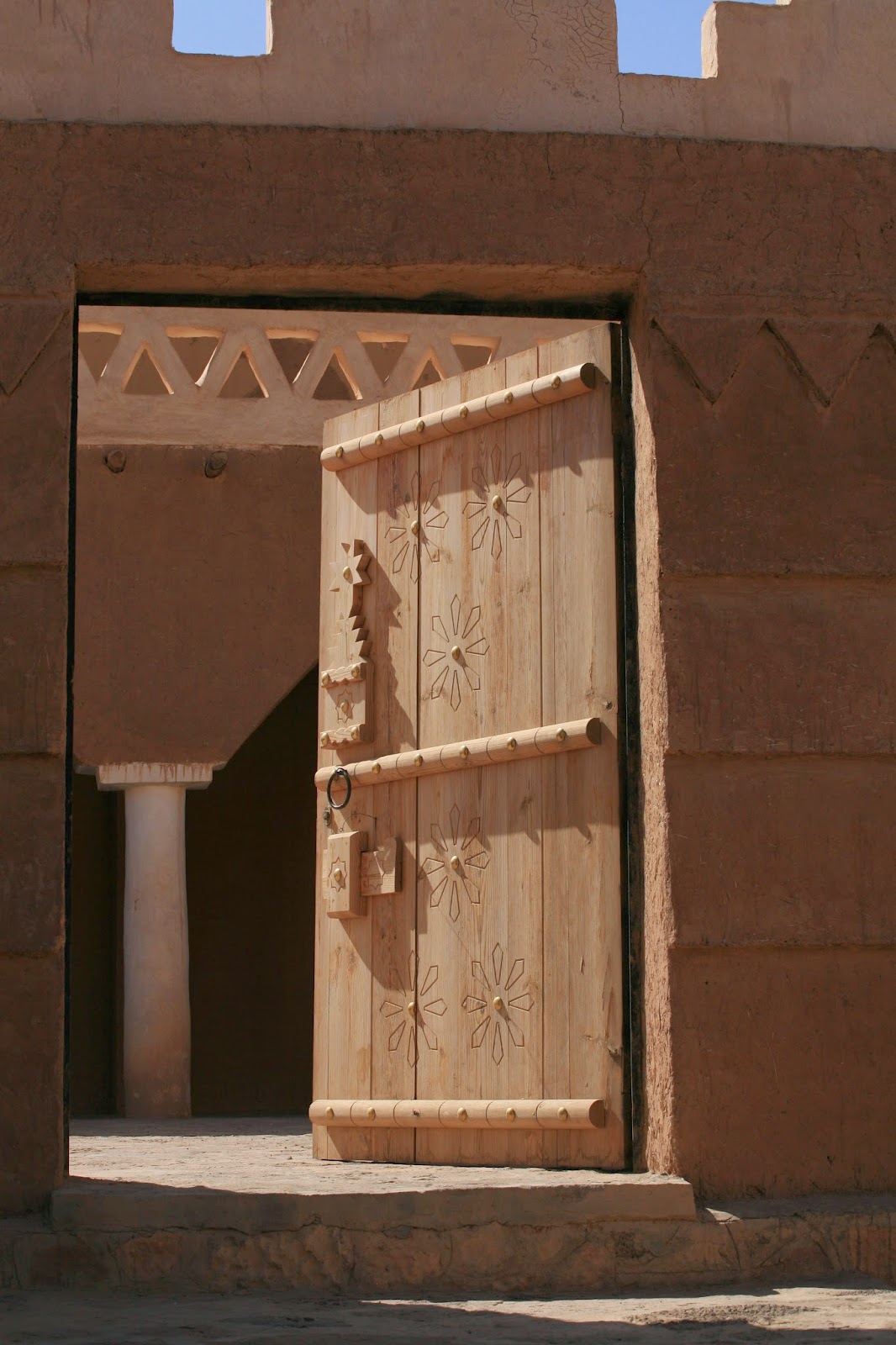Yesterday I took a trip to the Shagraa region of Saudia. We visited Ushaiger which is a village of old mud houses that is in the process of being repaired. Many of the mud houses that were original dwellings in this country have been left to ruin as buildings are now made of concrete blocks. It is unfortunate as the mud buildings are quite pretty. Ushaiger means "small blonde" and is so named because of the small mountain nearby. The mountain is actually red but red and blonde were used interchangeably at the time this was named.
Additionally, we went to an area of the desert that still has sea water beneath it. Most (maybe all, I forget) of this area was under water at one point many years ago. I have found fossilized coral and apparently people have found fish fossils (top of my list to find one!) So, there is still salt water under the desert floor which fascinates me. It is called white gold and they dig down to get the water and then pump it into shallow pools where it is allowed to dry in the sun. As the water evaporates, the salt is harvested and sold. So, I am now the proud owner of a much too big bag of desert sea salt!
One of the most fascinating parts of the trip was that the guide was a Saudi lady. Not too many women work outside of the home in this country, despite progress being made and new laws in place to increase saudi-ization in the work place. When they do work, it is generally as a secretary or a retail saleswoman and their faces remain covered. An interesting aside, a friend of mine owns a child care center and he has a saudi woman as the secretary due to the laws. So, he has to call before he walks into his own business to make sure she has her face covered to protect her modesty. It is very strange. But, this guide had her face uncovered and was very liberal. I asked where she was educated as her English was fabulous and I was surprised to hear that she was educated in Saudi. Most liberal Saudi women have been educated in the US or somewhere in Europe. She was very open about many of the issues her country faces and it was really interesting to speak with her.
She said that the men and ladies separate laws were new and that her grandmother used to let her grandfather's friends into the house and take coffee with them even if he wasn't home. She said the laws starting coming into place when the country got more progressive. It sounds counter intuitive but makes sense in some ways. She said that when people lived within the same villages their whole life, no one was a stranger so there was nothing to fear. But when people started traveling and moving around, strangers became a way of life and this was started as a "safety" thing for women. It has just swung too far, as many things with good intentions tend to do.
Upon viewing my pictures for posting, I think this post would better be titled "Doors and Windows." It will fast become obvious as to why. I included so many as they are all so different and equally beautiful. Believe it or not, I edited many of them out. Each one was different and interesting to me and I took a few too many photos!
 |
| This tower is the highest in the region. It is only about 22 meters but it served the purpose as being high enough to be a lookout for the village. We were allowed to climb it which I was pleased about. Definitely would have been outlawed at home for "safety" reasons. The steps were very uneven and slippery with dust. Additionally, it was pitch dark in the places between the windows. The stairs spiraled up to the top and got narrower and narrower. Towards the top you have to turn sideways and sort of hug the center of the spiral to fit. A few people headed up and didn't make it to the top. I went up with another lady and, if there weren't two of us, neither one of us would have made it either. It induced claustrophobia pretty quickly and both of us were breathing quite heavily. We just kept talking to each other and saying "just a few more steps." It was a relief to pop out the top into the sun! So, zoom in to this photo, that is us, poking our heads over the rim. My hair is the white spot on the right |
 |
| Another one, you can see the wind whipping my hair |
 |
| This is one of the holes where the salt water is first pumped up |
 |
| You can see a harvested pile of salt in the back right |
 |
| Starting to evaporate |
 |
| More evaporation |
 |
| Me in front of the salt pile |
 |
| Giant bags of salt |
 |
| The interior of the mosque |
 |
| Another shot of the mosque. I loved the arches |
 |
| One of the more simple doors |
 |
| The details carved into the mud were very pretty. The white is gypsum |
 |
| This hole in the wall is the date storage container. All houses had them as dates were an important food source. These were quite deep and lined with palm fronds. The date honey would drip down to the bottom of the fronds so the dates kind of dried out rather than went bad |
 |
| This is down into the date hole with my flash as it was pitch dark in there. Didn't see the rubbish until after the photo was taken |
 |
| A painted and carved door |
 |
| Another mosque. This is the outside. You can see where water has made the mud track onto the gypsum. Thankfully it doesn't rain here too often |
 |
| Mosque again, I like the rugs, they are all different but all are usually these really long things that run the width of the room |
 |
| The altar area of the mosque (I'm not sure that is what it is called but it serves the same purpose) |
 |
| Carved, extra wide door. |
 |
| This may be my favorite photo so far. The rug is a prayer rug. People actually live here, this is not an abandoned village. |
 |
| Completely different style painted door. These are particularly fascinating because you don't see a lot of color here. |
 |
| The simplicity of this room was gorgeous! This was in a building that was built as a guest house for King Abdulaziz, the first monarch of Saudia. This village was on the way to either Mecca or Madina (I forgot which) and he would stay here when he made Haj (the pilgrimage.) He stayed here six times and it wasn't ever used for anyone else. |
 |
| More of the same room |
 |
| This is King Abdulaziz' upstairs salon. You can also see an example of a ceiling in this photo, they are made of logs |
 |
| You can really see the decorations at the top of the room in this photo. They are carved into the mud then covered in gypsum. |
 |
| I like the contrast of the restored buildings against the older ones |
 |
| More of the beautiful carvings, these are not covered in gypsum as they are outdoor decorations and water runs it too much |
 |
| You can see drainage spouts in this photo |
 |
| This is neat, see the two doors in the middle in the renovated walls? Each of these houses (or plots of land with rubble on them) is privately owned. Some money was donated for renovations of the common areas but not the houses themselves. So, a common wall will be renovated and doors put in where houses are supposed to be. People can then choose to renovate (read as rebuild) their mud house using the new wall and door or leave it a disaster. Clearly these families aren't up to renovating theirs! |
 |
| Much simpler carving style here |
 |
| Although a simple style, it is quite striking when seen on the whole wall! |
 |
| Minaret of a new mosque behind a pile of old buildings |
 |
| Something about this car, in this spot, really interested me. And, it was a good opportunity to play with some of the features of the fancy camera that my friend Marc has lent me and my other friend, Lori, has taught me to use (a little.) Is this AV or TV, Lori? I can never remember which is which so I shoot both then keep the photo that has the effect I wanted. I'll never make it as a photographer! |
 |
| Again, the contrast of the new and old is fascinating to me |
 |
| View from the tower |
 |
| The following photos are views of Ushaiger, the village, taken from on top of Ushaiger, the little blonde mountain |
 |
| Same basic view as above. You can more clearly see the renovated buildings in the background here. |
 |
| People barbecue everywhere here. They just pull to the side of road and have a cookout. |
 |
| Another door... |
 |
| They have run limited electricity (used only for lighting) in here. You can see the wires, safety code hasn't reached here quite yet! |
 |
| This lantern has been electrified |
 |
| Notice the camel bones in here? They are huge! |
 |
| You can see the palm fronds that are mixed with the mud |
 |
| The windows are metal grates with swing closed wooden doors |
 |
| Different window style, this is set into a floor, they have these in the ceiling and then in each floor directly below to let light in all the way through the house. Sometimes they have the wooden bars, sometimes a waist high mud railing around them. Original skylight? |
 |
| Another window |
 |
| I feel as if they forgot to finish painting this one. I love the hot pink at the top but it doesn't repeat at the bottom |
 |
| Window... |
 |
| This was a bit disturbing. The mosque was in session so maybe someone left it here to collect later? But it was as much in the middle of the road as it appears to be. |
 |
| Only metal doors I saw. |
 |
| The view on the bus ride back to Riyadh! |
 |
| Me and my friend Yvonne, I'm taking Arabic coffee, it comes in tiny little cups which is why I felt the need to explain what I was doing. Yvonne is giving someone the death stare! Our other friends are goofing on the upper landing. This was towards the end of a long day of touring around. I could have spent the rest of the day on those cushions |
 |
| Our group outside of a little museum. The proprietor wanted a photo with us. I was also asked by a group of three ladies to be in a photo with them. It happens frequently to me here, not so much to my friends. I think it may be the oddity that is my hair. I laugh when I think of how many random facebook pages I am on. |





































































































































